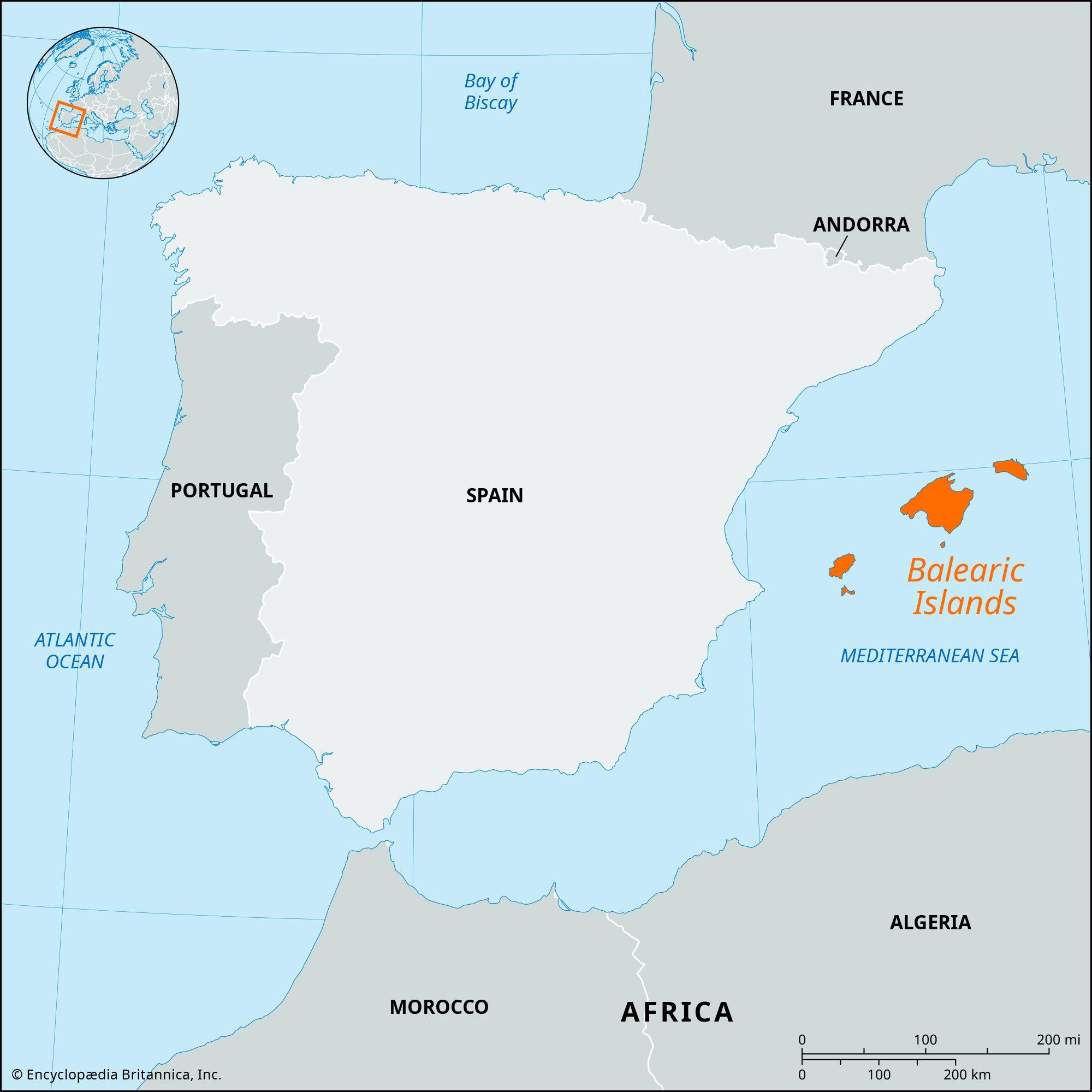Amidst the cobalt waters of the Mediterranean lies a cluster of islands known for their unparalleled beauty, vibrant culture, and lively holiday destinations. The Balearic Islands, with their enchanting landscapes, have long been a haven for both the tranquility-seeking introvert and the adventure-thirsty extrovert. But beneath the surface of this paradise, a critical issue simmers – housing.
As the sun casts its golden hues over Majorca, Ibiza, Menorca, and Formentera, an equally significant development unfolds in the legislative chambers of this autonomous community. The Balearic government has unveiled a groundbreaking housing law, aiming to address the dire need for affordable living spaces and to put a halt to the soaring housing prices that have plagued both locals and newcomers alike.
This article peels back the layers of the new housing law, delving into its objectives, mechanisms, and the potential impact on the islands’ residents and their future. From controversial constraints placed on property owners to innovative strategies to increase the housing stock, we navigate the complexities of a legislation poised to redefine the essence of home in the Balearics. Join us on this exploratory journey through the nuances of a law that promises to sculpt the islands’ social fabric and perhaps, set a precedent for other regions grappling with similar challenges.
The Heart of the Matter: Understanding Spain’s Balearic Islands’ New Housing Law
Diving into the intricacies of the Balearic Islands’ new housing law reveals a groundbreaking approach aimed at tackling the acute housing shortage that has beset this idyllic region. This novel legislation is not just any rule book thrown into the bureaucratic sea; it’s tailored to arrest the crisis by several innovative mechanisms. Key among these is the imposition of a cap on the number of tourist rentals, a move designed to reclaim the housing stock for residents. Imagine the streets of Mallorca or Ibiza, where homes once again buzz with the laughter of local families instead of transient visitors. This pivotal shift underscores a bold commitment to fostering communities over commerce.
Beyond this, the legislation pioneers the requisition of empty properties. Owners of homes lying vacant for more than two years are now required to offer them to the regional government for rental purposes. Here’s where the math becomes fascinating:
| Empty Homes Identified | Rental Period Requirement |
| Under 20 homes | 5 years |
| 20-100 homes | 7 years |
| Over 100 homes | 10 years |
This table not only crystallizes the government’s strategy but also sends a clear message about the seriousness of revitalizing neighborhoods. Moreover, the law introduces bold financial disincentives, such as hefty fines for property owners who diverge from compliance pathways, ensuring that the rules of engagement are clear and consequential. This comprehensive package could very well serve as a beacon for other regions grappling with similar urban challenges, illustrating that the essence of governance lies not in the might of authority, but in the courage to innovate for the collective good.
A Closer Look: How the Legislation Impacts Renters and Buyers Alike
The recent legislative overhaul in Spain’s Balearic Islands has introduced a series of measures that are set to transform the landscape for both renters and property buyers, seeking to address the urgent affordability crisis in this real estate hotspot. At the heart of these changes are enhanced protections for tenants and new regulations that aim to curb speculative buying, which has often left potential homeowners priced out of the market. For renters, the legislation ushers in extended lease agreements and caps on yearly rent increases, tying them closely to the inflation rate rather than market whims.
In contrast, buyers will find the path to homeownership slightly less daunting, thanks to the implementation of restrictions on the purchase of multiple properties by single entities and incentives for first-time buyers. To illustrate, the table below showcases just how these changes are poised to make a difference:
| Aspect | Impact on Renters | Impact on Buyers |
|---|---|---|
| Lease Terms | Minimum lease terms extended, offering greater stability. | N/A |
| Rent Increase Caps | Yearly increases tied to inflation, not market rates. | N/A |
| Buying Restrictions | N/A | Limits on bulk buying to reduce speculative purchases. |
| First-Time Buyer Incentives | N/A | Tax rebates and financial aid for eligible individuals. |
The ripple effects of these legislative adjustments are anticipated to recalibrate the housing market, making it more accessible and equitable for locals and newcomers to the Balearic Islands alike. By mitigating the extremes of market speculation and providing a firmer foundation for both renters and buyers, the new laws aim to nourish a healthier, more sustainable housing ecosystem in one of Spain’s most coveted regions.
Navigating the Changes: Practical Advice for Navigating Spain’s Latest Property Regulations
The Balearic Islands have recently introduced a series of sweeping changes to their property regulations, aimed at cooling down the red-hot housing market and creating a more equitable environment for locals and foreigners alike. Among the most significant of these changes is the restriction on the creation of new tourist rentals in areas already saturated with such accommodations. This move is intended to preserve residential zones for permanent residents and ensure the availability of affordable housing. Additionally, the government is implementing measures to cap rent increases, tying them to a Local Reference Index instead of the volatile market rates. This is expected to halt the spiraling rent costs and offer some respite to those struggling to find affordable living spaces.
Navigating these regulations requires a strategic approach, especially for property investors and landlords. Here are some practical tips:
- Stay Informed: Regularly seek out information from official channels and local real estate experts. The nuances of these new laws could have significant implications on your investment strategy.
- Assess Your Portfolio: If you own property in areas now designated as “saturated,” consider how these changes will affect your ability to rent out your property. You might need to shift your focus towards long-term rentals, which are still encouraged under the new regulations.
- Review Legal Agreements: For those already engaged in tourist rentals, it’s crucial to review your legal agreements and ensure they comply with the latest regulatory requirements. Non-compliance could result in hefty fines.
- Plan for Adjustments: With rent increases now tied to the Local Reference Index, landlords should plan for less aggressive revenue growth from their rental properties. It might be time to reassess your financial projections and investment ROI.
| Action | Priority | Impact |
|---|---|---|
| Consult a local real estate lawyer | High | Understanding legal compliance |
| Update rental agreements | Medium | Ensuring leases are current |
| Revise investment strategies | Medium | Adapting to market changes |
By adopting a proactive stance and adjusting to these regulatory shifts, property owners can not only navigate the complexities of the new housing law but also uncover opportunities in this changing landscape. Whether it’s pivoting to long-term rentals or reevaluating investment strategies, flexibility and informed decision-making will be key to success in Spain’s Balearic Islands’ property market.
Beyond the Horizon: Future Implications of the Balearic Islands’ Housing Reform
As we peer into the crystal ball to ponder the future implications of the housing reform on Spain’s enchanting Balearic Islands, it becomes clear that this legislation could set a new benchmark for sustainable living and tourism. The essence of the reform is not just to address the immediate concerns of affordability and accessibility of homes for residents but to recalibrate the relationship between the islands’ natural resources and human habitation. The broader vision envisions a landscape where local communities flourish alongside a more responsible, eco-conscious tourism sector. This delicate balance could potentially nurture a unique model for other global destinations grappling with similar challenges.
The roadmap for achieving this vision is laid out with several intertwined paths:
- Sustainable Development: Integrating green building practices and renewable energy sources to reduce the ecological footprint of new and existing structures.
- Community Engagement: Fostering a participatory approach that involves local inhabitants in decision-making processes, ensuring that development aligns with their needs and values.
- Tourism Reimagined: Encouraging a shift towards sustainable tourism that respects the islands’ carrying capacity and promotes off-peak visits to minimize environmental impact.
| Aspect | Pre-Reform Scenario | Post-Reform Vision |
|---|---|---|
| Housing Accessibility | Limited and expensive | Improved through regulations and incentives |
| Environmental Impact | High, with unchecked tourist accommodation growth | Reduced through sustainable policies |
| Local Community Involvement | Minimal in housing decisions | Central, with frameworks for participation |
| Tourism Dynamics | Seasonal peaks leading to resource strain | Even distribution with a focus on sustainability |
These paths are not without their challenges, ranging from regulatory hurdles to the need for significant investment in new technologies and infrastructures. However, by embarking on this transformative journey, the Balearic Islands have the potential to not only emerge as a leader in sustainable living and tourism but also to significantly enhance the quality of life for its residents and visitors alike. The future beckons with a promise of harmony between nature and human ambition, making the Balearic Islands a beacon of hope in the Mediterranean.
In Summary
As the Mediterranean sun sets on the picturesque landscapes of Spain’s Balearic Islands, the implementation of the new housing law ushers in a hopeful dawn for its residents. Aiming to strike a delicate balance between nurturing tourism and safeguarding the locals’ right to affordable housing, this legislation is like a cartographer’s compass, attempting to navigate the treacherous waters between economic benefits and social welfare.
As we draw the curtains on our discussion, it’s clear that this law is not just a set of rules inscribed on paper, but a reflection of a community’s aspirations to redefine the essence of home. The Balearic Islands stand at the helm of a new voyage, charting courses through untested waters. Will this legal compass lead them to the haven of equilibrium, where the heart of local culture beats in harmony with the pulse of tourism? Only the tides of time will tell.
Until these questions are answered, we continue to watch, listen, and learn from the Balearic Islands’ bold step forward. May their journey illuminate paths for other regions grappling with the universal challenge of balancing the scales between development and preservation. In the end, the story of the Balearic Islands and its new housing law is a narrative of hope, of innovation, and of a steadfast commitment to the well-being of a place called home.




